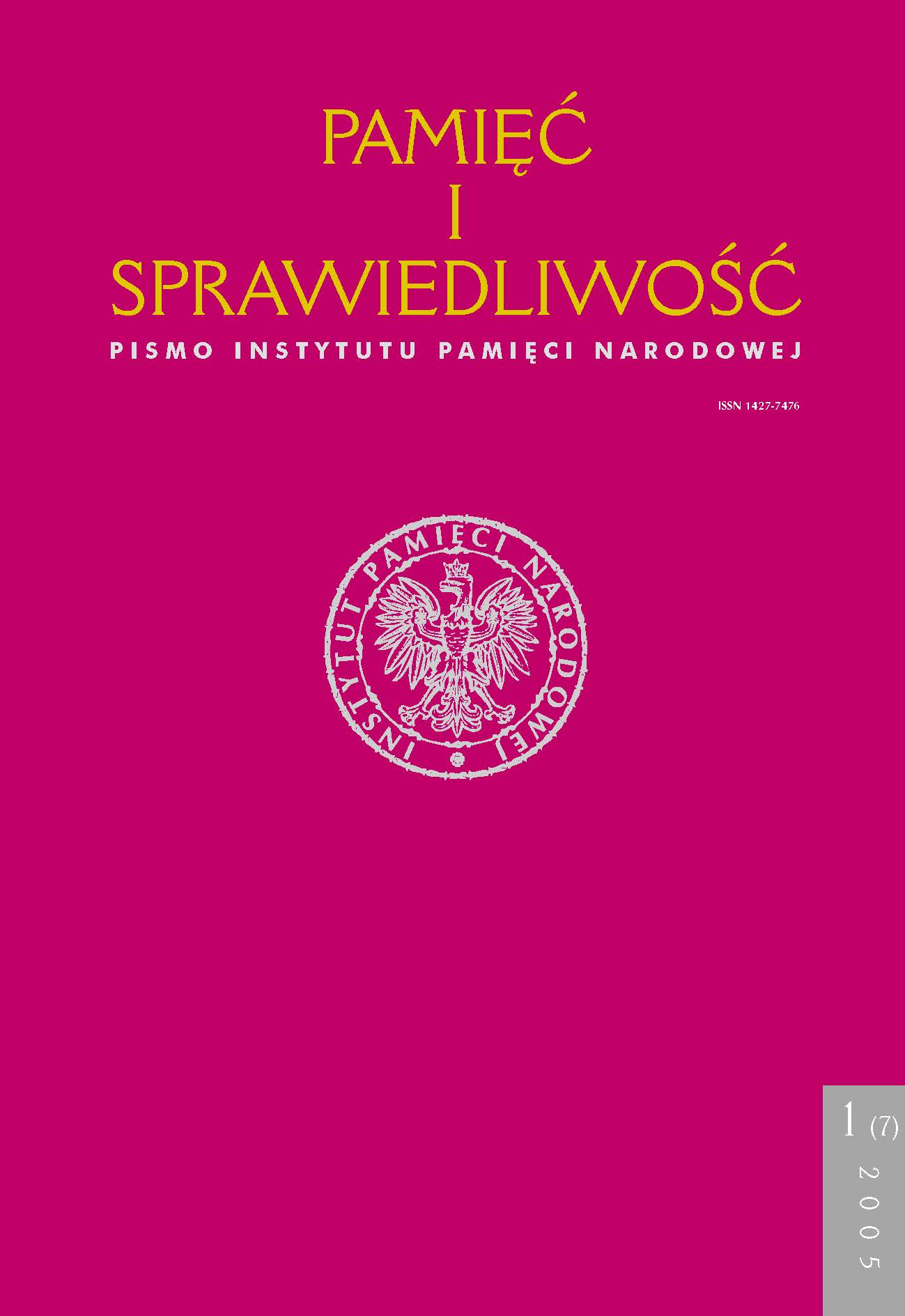Kryzys działalności Departamentu VI KdsBP przeciwko Kościołowi rzymskokatolickiemu w Polsce i próby jego przezwyciężenia (1954–1956)
Pamięć i Sprawiedliwość, Vol. 7 No 1 (2005), pages: 99-122
Publication date: 2005-06-30
Résumé
The symptoms of a crisis in the religious beliefs’ sector of the security apparatus were apparent even before the abolition of the Ministry of Public Safety (MBP). The situation did not improve on forming the Public Safety Committee (KdsBP) and the transformation of Department XI of the Ministry of Public Safety into Department VI of the Public Safety Committee. The crisis in this sector in the security apparatus was intensified after 1954 as a result of the thaw processes, the fact that the Committees workers were under prepared and the lack of necessary cooperation between the different structures within Department
VI. The Department’s work was also hampered and destabilised by its reorganisation and new specifications concerning their scope of work (1954–1955).
The crisis was apparent in many of the Committee’s operational fields of activity against the Church in the years 1954–1956. It reduced the scope and even more so the effectiveness of religious policy, due to the fact that the Committee had a more important role than any other state institution in implementing the policy’s basic principles.
After 1954 the Catholic Church used the disintegration of the power apparatus to strengthen its own position. Poland’s political situation at the time made it possible to force the Polish People’s Republic authorities to liberalise their religious policy and to fight for the recovery of the ground that had been lost. The State tried to oppose the Churches “offensive” by enhancing the security apparatus’s efficiency and scope of activity, firstly (but not only) that of Department VI of the Committee. For this reason as from September 1955 to October 1956 a turn towards counteracting the crisis in this sector and the intensification of a restrictive course of the religious policy took place.
Due to the political thaw then in train the workers of Department VI of the Public Safety Committee did not manage to overcome the crisis by the end of the third quarter of 1956. The gradual improvement of this sector’s work quality visible from the end of 1955, was hampered by the socio-political changes in Poland, which reached their climax in October 1956. The extraordinary circumstances, which arose after the arrest of Cardinal Stefan Wyszyński, when the authorities could have totally subordinated the Church, were not used properly. They not only ran out of time but also of strength and resources. In this context the authorities religious policy ended in defeat. After 1956 a return to the persecution of the Church on a scale comparable the years 1944–1956 was impossible.
Articles les plus lus par le même auteur ou la même autrice
- Bartłomiej Noszczak, Przesiedlenie żeńskich zgromadzeń zakonnych z województw katowickiego, opolskiego i wrocławskiego (sierpień 1954) , Pamięć i Sprawiedliwość: Vol. 9 No 1 (2006)
- Bartłomiej Noszczak, Na początku był bunt. Federacja Młodzieży Walczącej w Warszawie (1984–1989) , Pamięć i Sprawiedliwość: Vol. 19 No 1 (2012)
- Bartłomiej Noszczak, Drogi i bezdroża młodzieżowej konspiracji. Klub Wykolejeńców (1950–1951) w świetle dokumentacji tajnej policji politycznej Polski Ludowej , Pamięć i Sprawiedliwość: Vol. 20 No 2 (2012)
- Bartłomiej Noszczak, Solidarność poznaniaków. Komitet Studenckiej Pomocy dla Więźniów Politycznych i jego kontynuacja w postaci akcji "rodzin zastępczych" (1956-1959) , Pamięć i Sprawiedliwość: Vol. 28 No 2 (2016)
- Bartłomiej Noszczak, Antykościelna międzynarodówka. Współpraca polskiego Urzędu do spraw Wyznań z jego odpowiednikami w państwach „demokracji ludowej” (1954–1962) , Pamięć i Sprawiedliwość: Vol. 33 No 1 (2019)
- Bartłomiej Noszczak, Nobel za Orędzie? List o. Stanisława Wawryna SJ do prymasa Stefana Wyszyńskiego w sprawie możliwości przyznania Episkopatowi Polski Pokojowej Nagrody Nobla za wystosowanie Orędzia do biskupów niemieckich , Pamięć i Sprawiedliwość: Vol. 30 No 2 (2017)
 Język Polski
Język Polski
 English
English
 Deutsch
Deutsch
 Français (France)
Français (France)
 Italiano
Italiano
 Русский
Русский


 PDF (Język Polski)
PDF (Język Polski)
